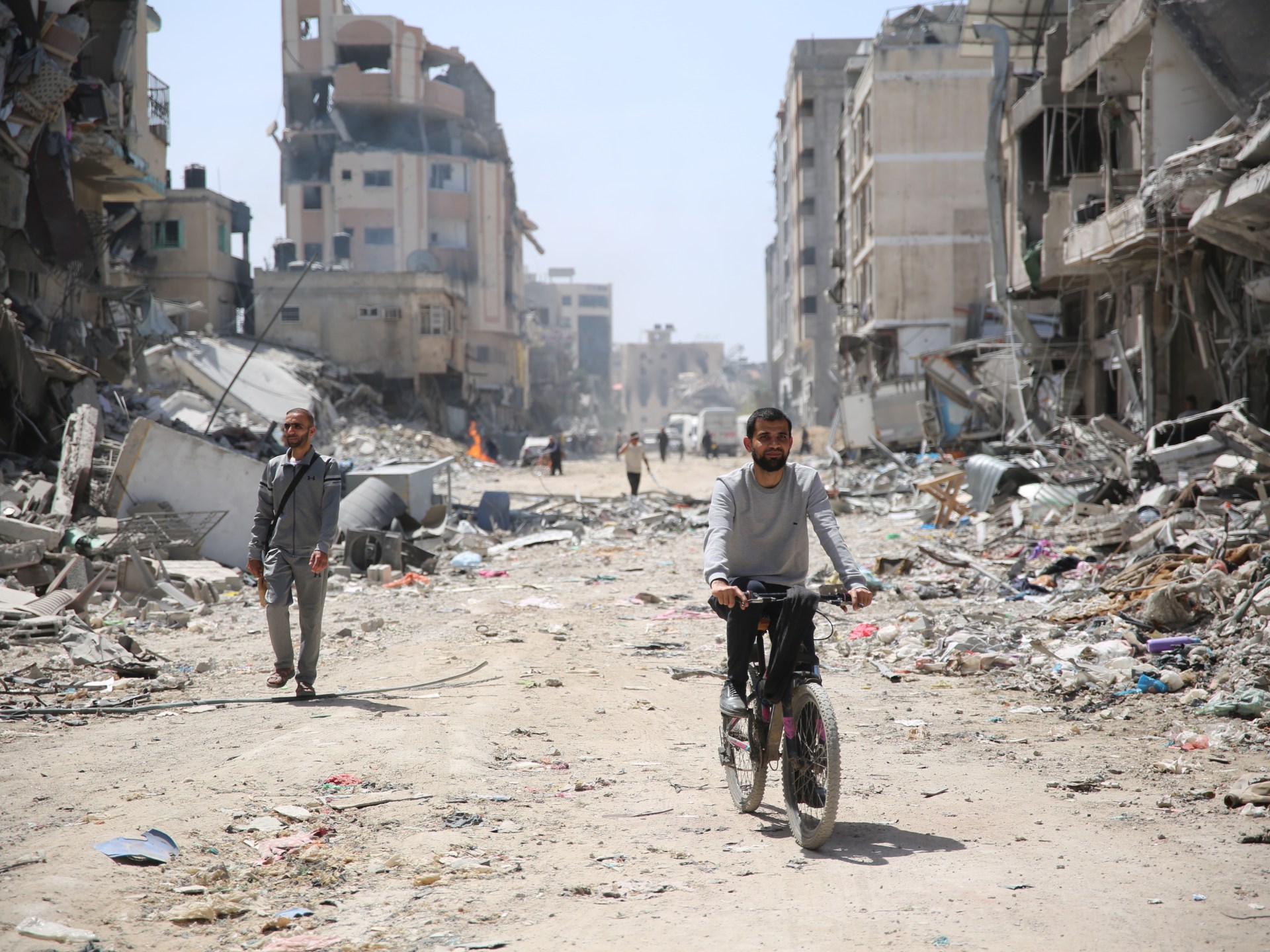Gaza infrastructure damages estimated at $18.5bn in UN-World Bank report

The initial assessment, which describes the level of destruction in Gaza as ‘unprecedented’, is likely to be an underestimate of the real damages, losses and needs in the Palestinian enclave.
The cost of damage to critical infrastructure in the first four months of Israel’s continuing war on Gaza is estimated at about $18.5bn, a new report by the World Bank and the United Nations has found.
The report estimated that the damage was equivalent to 97 percent of the combined GDP of the occupied West Bank and Gaza in 2022.
“The level of destruction in the Gaza Strip since October 2023 is unprecedented,” the Interim Damage Assessment Note released on Tuesday said.
The continuing conflict has damaged or destroyed approximately 62 percent of all homes in Gaza, equivalent to 290,820 housing units, and more than a million people are without homes. Housing accounts for 72 percent of the total damage costs, at an estimated value of $13.3bn.
Public service infrastructure, such as water, health and education, account for 19 percent, while commercial and industrial buildings make up 9 percent.
The energy, water and municipal sectors have suffered nearly $800m in damages and the water and sanitation system has been significantly reduced, delivering less than 5 percent of its previous output.
With 84 percent of health facilities damaged or destroyed, and a lack of electricity and water to operate the remaining ones, the population has minimal access to healthcare, the report found.
The education system has collapsed, with all of Gaza’s 625,000 students out of school. Damage to education infrastructure amounts to $341m as an estimated 56 school facilities have been destroyed and 219 partially damaged.
Additionally, 26 million tonnes of debris and rubble have been left in the wake of the destruction, an amount that is estimated to take years to remove.
“To date, 80 percent of total damages were concentrated in the governorates of Gaza, North Gaza, and Khan Younis,” the report said, noting that significant damage was also recorded in Beit Lahiya and Rafah governorates.
“The municipality of Gaza alone accounted for US$7.29 billion of total damage, with Jabalya following at $2.01 billion, Khan Younis at US$1.82 million, and Beit Lahiya accounting for US$1.08 billion of the total,” it said.
Such costs “are expected to increase substantially along with the magnitude of damages as the conflict continues. This is particularly true in the south of the Gaza Strip which has seen greater destruction in recent weeks,” it added.
The assessment, conducted with support from the European Union, used remote data collection sources and analytics to provide a preliminary estimate of damages to physical structures in Gaza from the conflict.
These initial findings are likely to be an underestimate of the real damages, losses and needs, which the organisations said would require a second analysis “as the situation allows”.
The report called for an increase in humanitarian assistance, food aid and food production, the provision of shelter and housing solutions for displaced people and the resumption of essential services.
Related
Ashghal commences roads, infrastructure development in Birkat Al Awamer
Doha, Qatar: The Public Works Authority 'Ashghal' started the implementation of the Roads and Infrastructure Development Project in Birkat Al Awamer. T
India-Qatar trade agreement must be approached with caution: GTRI –…
India should tread cautiously on a potential free trade agreement (FTA
Qatar’s Ashgal likely to award industrial areas infra consultancy contract…
Qatar’s Public Works Authority (Ashghal) is expected to award the design and lead consultancy contract for the North of New Industrial Area Roads and Inf
Qatar’s $2.5bn green bonds fund enhances renewable energy and infrastructure
Doha, Qatar: Qatar continues to boost its investments in sustainable development, demonstrating its competitiveness on the global stage. An official no












